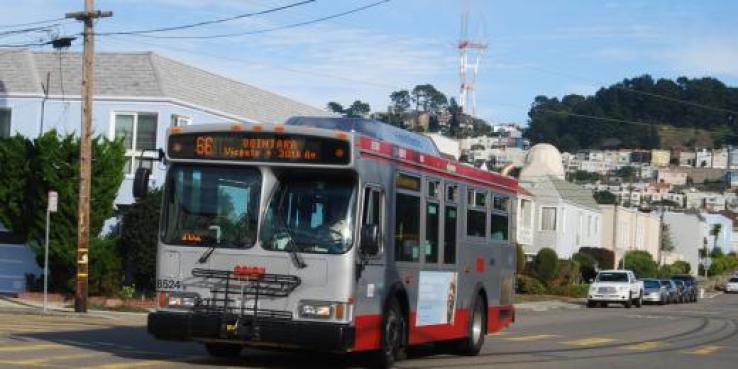San Francisco Mayor Ed Lee has selected SPUR Executive Director Gabriel Metcalf and Monique Zmuda of the SF Office of the Controller to co-chair his 2030 Transportation Task Force. While the mayor has made it clear that fixing Muni one of his top priorities, the group will look broadly at both local and regional transportation needs. Like other task forces the mayor has convened, this one will tackle a seemingly intractable problem: transportation funding.
The group’s goal is to “identify transportation capital priorities for the city and connect these plans and priorities to existing and new funding sources.” This will include evaluating existing capital plans, proposed capital plans and visioning for other potential plans. By the task force’s final meeting in October, the body is expected to present recommendations to the mayor. The group will meet eight times, not including scheduled site visits to bus and trolley facilities and a light rail site tour.
San Francisco’s local and regional transportation infrastructure is largely deteriorating. This includes streets, transit vehicles, rails and numerous other facilities, all of which have enormous funding needs just to maintain current conditions. And that doesn’t even address the capacity increases needed to accommodate the 2 million new people expected in the Bay Area by 2030.
While local funding sources can be cultivated to address some of these needs, it will be nearly impossible to fund them all. At the most recent task force meeting, city staff detailed a number of competing priorities:
- The Department of Public Works (DPW) explained what happens to streets if you don’t “fix it first.” A street block costs $240,600 over 75 years to maintain at excellent condition on average. However, allowing it to deteriorate until it reaches poor condition, then maintaining it at only fair condition on average, would cost $872,800 over 75 years. Street quality affects all travel modes: walking, cycling, transit, autos and trucks. DPW has more than $1 billion in deferred capital renewal needs, i.e. investments that preserve or extend the useful life of facilities or infrastructure.
- The San Francisco Municipal Transportation Authority (SFMTA) explained that its network, fleets and facilities are in urgent need of upgrading in order to meet the city’s ambitious goals to increase transit ridership. SFMTA delivers $828 million in services annually but needs $50 million more per year just to deliver its current transit service plan — and it will need another $20 million to deliver other key services like “complete streets,” i.e. amenities that accommodate pedestrians, cyclists and transit riders. At the same time, SFMTA needs $510 million per year to maintain its assets in a “state of good repair” but is currently funded at $260 million per year. As with streets, delaying maintenance on assets like trolley buses, or waiting for them to fail before repairing them, results in far greater lifetime costs.
- SFMTA’s Transit Effectiveness Project (TEP), if funded, would create 13 rapid and 10 frequent Muni bus routes. Meanwhile Muni provides services that may not be cost effective: 70 percent of Muni’s stops exceed the agency’s stop-spacing standards. (All of the rapid and frequent routes will meet those standards.)
- SFMTA showed that the city’s significant mode shift to bicycle use (a more than 71 percent increase in the number of people biking between 2006 and 2011) has come at a very low capital and operating cost. But a $170 million gap remains to fund the bicycle network scenario in the agency’s strategic plan. SFMTA also explained its process challenges: inter-agency coordination and capital project delivery continue to be slow, particularly for pedestrian projects. A task force member suggested that a pedestrian bulbout that costs the SFMTA $260,000 to construct costs half as much in New York City due to more efficient process.
The competing priorities are not limited to San Francisco: Future meetings will investigate how county capital needs are impacted by high-speed rail, the plan to modernize Caltrain and extend it to the new Transbay Transit Center, and other large transportation projects. We will report back on the recommendations that the task force develops.
